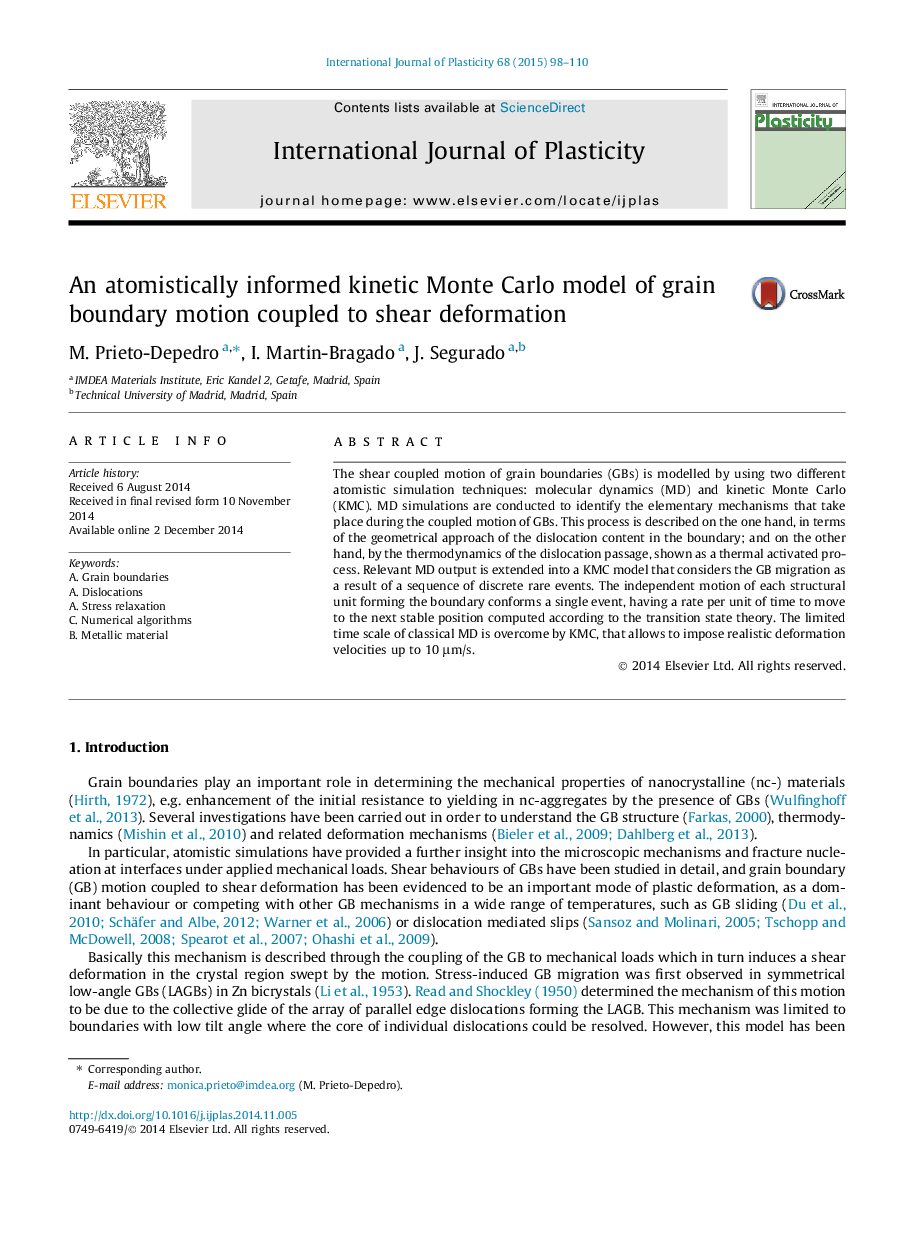| Article ID | Journal | Published Year | Pages | File Type |
|---|---|---|---|---|
| 786646 | International Journal of Plasticity | 2015 | 13 Pages |
•An upscale modelling of the shear coupled motion of grain boundaries is proposed.•Molecular dynamics (MD) gives an insight into elementary mechanisms of the process.•Relevant output from MD is scaled up into a kinetic Monte Carlo (KMC) model.•KMC allows to expand the deformation rates closer to experiments.•Comparisons to analytical results are shown to validate this approach.
The shear coupled motion of grain boundaries (GBs) is modelled by using two different atomistic simulation techniques: molecular dynamics (MD) and kinetic Monte Carlo (KMC). MD simulations are conducted to identify the elementary mechanisms that take place during the coupled motion of GBs. This process is described on the one hand, in terms of the geometrical approach of the dislocation content in the boundary; and on the other hand, by the thermodynamics of the dislocation passage, shown as a thermal activated process. Relevant MD output is extended into a KMC model that considers the GB migration as a result of a sequence of discrete rare events. The independent motion of each structural unit forming the boundary conforms a single event, having a rate per unit of time to move to the next stable position computed according to the transition state theory. The limited time scale of classical MD is overcome by KMC, that allows to impose realistic deformation velocities up to 10 μμm/s.
